|
The modeling technology was verified by comparison of actual
photos under a ring shaped light source and Diam Calc 3D models
of a yellow round brilliant CZ (Figure 4):
| Photo |
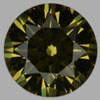 |
 |
 |
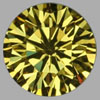 |
 |
| DiamCalc Image |
 |
 |
 |
 |
 |
| |
| Figure 4. A colored round brillian cut CZ with proportions close to Tolkowsky is photographed and modeled (botom row) under a ring-shaped, daylight-equivalent lamp.
|
The DiamCalc software can closely model the appearance of polished
colored stones in any lighting condition, thus it is possible to
model the appearance of any colored CZ or diamond in various cuts
as represented in figure 5.
 |
 |
 |
 |
 |
 |
 |
 |
 |
 |
 |
 |
 |
 |
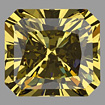 |
 |
 |
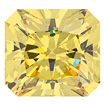 |
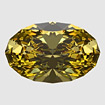 |
 |
 |
 |
 |
 |
 |
 |
 |
 |
 |
 |
Magna Colorscope
light on |
Magna Colorscope
light off |
Ring 6 cm |
Ring 17 cm |
Office |
Jewelry store (white background) |
| |
| Figure 5. Five cuts (round, princess,
radiant, oval, and triangle) are modeled in DiamCalc software
under various illumination conditions. The round, princess,
and radiant cuts are scanned models with real symmetry
deviations. The oval and the triangle cuts are parametrical
models. Each row contains images of the same stone model
in different lighting conditions. The ring lightings are
symmetrical illuminations, while the office and jewelry
store environments are "real situation" illuminations;
these stones are modeled face-up. |
There are shapes and proportion sets that have better look in one illumination but worse on another. But other shapes are more stable to lighting changes:
 |
 |
 |
 |
 |
 |
| |
| Figure 6. A radiant cut apearance is
more stable while an oval is better in the Dialite light
(bottom row) and a round is better in the Office light
(top row). The background is modeled black. |
|




















